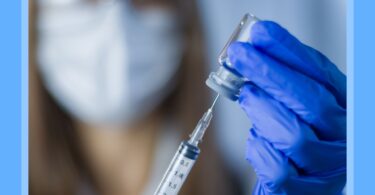Abstract: The birth of a baby brings new challenges for a mother. Sometimes after the birth of the baby, the mother develops a mood disorder known as postpartum depression. This can have an adverse effect on maternal-infant bonding and thus require special attention. Homoeopathic treatment with proper emotional support and psychotherapy offers a solution to this complaint and thus helps the mother to enjoy her motherhood.
Keywords: Depression, psychotherapy, talking therapy, baby blues homoeopathy, organon, repertory
Abbreviations: Postpartum depression (PPD)
Introduction
The birth of baby brings many changes in the life of the woman. It is associated with a flood of emotions that ranges from excitement and joy of having a baby and being a mother to fear and anxieties for care of the baby. But sometimes it results in something unexpected, and that is depression.1
Adjusting to being a new mother can be stressful. The newborn needs lot of care and for this it is mainly dependent upon the mother. All the priorities of life of a woman shift toward her baby after birth. It seems as if her world is only the new born.
She is full of emotions, excitement and joy but sometimes because of constant overwork, lack of social life, (as she needs to take care of the baby at home) and anxieties related to care of the child, she experiences mood changes like sadness, irritability, crying spells, trouble sleeping, poor appetite.
These changes may be short lasting and gradually they become better. These are termed “Baby Blues” and without treatment they disappear spontaneously. But when these changes become long lasting, severe and interfere with the mother’s ability to handle the newborn, it requires special attention, as these can be signs of “postpartum depression”.1
Postpartum Depression
It is a type of mood disorder which appears in some women after delivery. It commonly appears within 6 weeks after childbirth but may begin up to 1 year after birth.2
Signs and symptoms
Characteristic features of PPD includes mood swings, excessive crying, indifferent to baby, lack of social interaction, indifferent toward family, inability to sleep, fatigue, lack of interest in routine activities of activities which she used to enjoy, intense irritability with the child or family members, anger, hopelessness, helplessness, guilt feeling that she is not a good mother or wife, severe anxiety or panic attacks and inability to handle the new born.3
Causes and risk factors: There is no specific cause of PPD but physical and emotional factors may play a great role.
- Hormonal: Pregnancy and delivery is the time when hormonal levels vary greatly. During pregnancy there is surge of oestrogen and progesterone hormones and after delivery their levels decline drastically and there is an increase in oxytocin. The drastic changes in these hormones contribute to PPD.1 After childbirth, the activity in the amygdala nuclei (a set of neurons located deep in the medial temporal lobe) increases. It has receptors for the oxytoxin. The greater the response of the amygdala, the more the mother feels affection for her baby and understands the needs of the baby by the baby’s cries. It has been seen that symptoms of PPD are associated with lesser amygdala response.4
- Emotional: The newborn is completely dependent upon his mother for all his needs. He needs constant care and affection. As a result of that, sleep deprivation and anxieties about health develop in the mother. Also, she becomes conscious of her body image, her social life declines, she struggles for her identity, her career halts as she may needs to take leave from a job. There may also be lack of support from other family members. All these factors may contribute to PPD.5
- History of depression after previous pregnancy.
- Family history of depression.
- Unplanned pregnancy
- Medical complications after childbirth may also lead to PPD.3
General Management: In order to treat PPD, we need to understand the mother’s emotions. She is going through a changed phase of life with new responsibilities. She needs love, care and family support, so that she does not feel isolated and can find time for herself also.
The following changes may help her in dealing with depression
- Include physical activity like walking with your baby in a natural environment like in park.
- Keep social life active. You also need time for yourself. Interact with your friends.
- Do not pressure yourself with household chores.
- Take a healthy diet. Include fruits in your diet. There is positive relationship found between healthy diet and healthy mind. Research shows people who eat fruits, vegetables, whole grain are less likely to have depression.
- You can join different groups of mothers on social media and can share your concerns with them.
- Bring in yourself a sense of acceptance.
- Follow your hobbies. Do what makes you feel joyful. Spending time on an activity that you enjoy can improve your mental health and wellbeing.6
Homoeopathic approach in PPD
Homoeopathy with its holistic approach proves to be one of the effective systems of medicine for dealing with cases of PPD. Dr. Hahnemann, the Father of homoeopathy was well versed with mental disorders.
In Organon of Medicine, he has clearly defined how to take the case, the origin and treatment of mental disorders and their management (from aphorism 210-230). The detailed case taking as defined by Dr. Hahnemann clearly describes the need to understand the patient’s feeling, her emotions and her circumstances and factors that derange health.
The patient needs to talk in detail about her feelings (as defined in aphorism 84), This individualizing concept of homoeopathic case taking is similar to a psychotherapy known as “talking therapy” where a patient can talk about her feelings and thought and relieve her stressful emotions. 5,7
In aphorism 94, it is clearly mentioned that the physician should try to enquire the circumstances which have made the patient sick. The physician should enquire about the patient’s mode of living, diet, and her domestic
Understanding of circumstances that are causing disease will help the physician in to counsel the mother as well as her family members. 7 Aphorism 226 is related to the concept of psychotherapy. It states that display of confidence, friendly exhortations, sensible advice and appropriate diet and regimen help the patient to achieve a healthy state of mind.7
Thus, the subjective and objective understanding of the case along with the consideration of underlying causes helps in selection of the simillimum.
Miasmatic analysis of PPD
In Organon of Medicine, aphorisms 210, 222 and 228, mental diseases are said to be of Psoric origin and are to be treated with antipsoric medicines.7
Commonly used homoeopathic medicines:
Remedies which are often indicated in treatment of PPD are as follows:
- Sepia officinalis: Diseases of women; especially those occurring during pregnancy, childbed and lactation or disease attended with fatigue. Great sadness and weeping. Indifferent, even to one’s family, one’s occupation, to those whom she loves most. Indolent and does not want to do anything, either work or play. Irritable, easily offended.8,9
- Psorinum: Hopeless, despair of recovery. Melancholy, deep and persistent. Anxious, full of fear. Very depressed, sad, suicidal thoughts.8,9
- Lilium tigrinum: Profound depression of spirits, can hardly avoid weeping. Indifferent about what is being done for her. Anxious about disease. Fears insanity. Consolation aggravates.8,9
- Actea spicata: Puerperal mania, thinks she is going crazy. Great depression with dream of impending evil.8,9
- Ignatia amara: Changeable mood, silently brooding. Melancholic, sad and tearful. Sighing and sobbing. Not communicative. Desire to be alone.8,9
- Anacardium orientalis: Sadness after delivery. There is anxiety, apprehension, and fear of approaching death. Fear and mistrust of the future, with discouragement and despair. Fixed idea that there is no reality in anything, all appears like a dream; delusion that her husband is not her husband, her child is not hers. Gets offended easily.11
- Pulsatilla Pratensis: Fear of being alone. Weeps easily; almost impossible to detail her ailments without weeping. Easily discouraged. Silent mood; inclined to silent grief; submissive. Mania from suppressed menses.8,9
- Lachesis: Mental dejection and melancholy. Looks upon the dark side of everything, and thinks she is persecuted, hated and despised by acquaintances. Sadness when awaking in the morning. No desire at all to mix with the world. Sadness and disgust to life. Loquaciousness. Women who have never recovered from changes of life, “have never felt well since that time.”8,9,11
- Platina: Sadness, especially in the evening, with strong inclination to weep often. Thinks she stands alone in the world. Anxiety with great fear of death. Pride and self-conceit, with contempt for others, even for those who are usually most beloved and respected. Impulse to kill her own child and husband.11
- Phosphorus: Weary of life, full of gloomy forebodings. Melancholy sadness, sometimes with violent weeping. Great apathy; very sluggish; dislikes to talk; answers slowly or not at all. Hypochondriacal sadness. Disgust for life. Great indifference to everything, and even to patient’s own family.8,11
- Veratrum album: Melancholy with stupor and mania. Sullen indifference. Melancholy dejection, sadness, and inclination to weep. Inconsolable affliction, with howling and crying, imaginary misfortune. Discouragement and despair, hopelessness of life. Cannot bear to be left alone; yet persistently refuses to talk.8,9,11
- Natrum muraticum: Depressed. Irritable, gets a into passion about trifles. Marked disposition to weep without cause and consolation from others aggravates her troubles.8,9
Repertorial approach
The repertorial approach provides a better solution in homoeopathy to reach the simillimum in a particular case of PPD. The repertorisation of the following symptoms from Synthesis Repertory gives a group of remedies, from which the simillimum can be selected on the basis of individual characteristic symptoms related to constitution, mental generals, modalities, sensation and concomitants in a particular case. (See reportorial sheet)10

Repertorial sheet
Conclusion
If after childbirth a woman feels low mood, social isolation, irritability, sadness and is unable to handle the newborn, she should openly share these symptoms with her doctor, so that early diagnosis can be made and proper treatment can be started if required. Homoeopathic treatment, proper counseling and general management can help the new mother to overcome PPD and enjoy her motherhood.
References
- Mayo Clinic. Postpartum depression. Updated on 2018 Sept 01 [Cited 2020 Jan 19] Available from: https://www.mayoclinic.org/diseases-conditions/postpartum-depression/symptoms-causes/syc-20376617
- Ahuja N. A short textbook of Psychiatry. 5th New Delhi. Jaypee Brothers, 2002
- National Institute of Mental health. Postpartum depression facts. Cited 2020 Jan 19. Available from: https://www.nimh.nih.gov/health/publications/postpartum-depression-facts/index.shtml
- Adrienne Lafrance, What happens to a woman brain when she becomes a mother, Published 2015 Jan 08 [Cited 2020 Jan 19]. Available from: https://www.theatlantic.com/health/archive/2015/01/what-happens-to-a-womans-brain-when-she-becomes-a-mother/384179/
- The American College of Obstetricians and Gynaecologists. Updated on 2019 Nov [Cited 2020 Jan 19]. Available from: https://www.acog.org/Patients/FAQs/Postpartum-Depression?IsMobileSet=false
- R Morgan Griffin, 10 natural depression treatments. Updated on 2015 May 17 [cited on 2020 Jan 19]. Available from: https://www.webmd.com/depression/features/natural-treatments#1
- Hahnemann S. Organon Of Medicine. 5th and 6th New Delhi. B Jain Publishers (P) Ltd, 2015
- Allen H.C. Keynotes and Characteristics with comparisons of some leading remedies of the material medica. 8th New Delhi. B. Jain Publishers (P) Ltd. 2016; p 260-261, 232, 166, 15, 114, 235, 157, 220, 300, 199
- Boericke W. Pocket manual of Homoeopathic Materia Medica with Indian Medicine and Repertory. 9th New Delhi. Indian Book and Periodical publishers, 2002; p 586, 533, 401, 204, 342, 520, 377, 643, 448
- RADAR [computer program]. Version 10.0. Belgium: Archibel. 2009
- Clarke J H. A Dictionary of practical material medica. Student edition. New Delhi. B Jain publishers (P) Ltd, 2006.
- Mayo Clinic. Postpartum depression. Updated on 2018 Sept 01 [Cited 2020 Jan 19] Available from: https://www.mayoclinic.org/diseases-conditions/postpartum-depression/symptoms-causes/syc-20376617
- Ahuja N. A short textbook of Psychiatry. 5th New Delhi. Jaypee Brothers, 2002
- National Institute of Mental health. Postpartum depression facts. Cited 2020 Jan 19. Available from: https://www.nimh.nih.gov/health/publications/postpartum-depression-facts/index.shtml
- Adrienne Lafrance, What happens to a woman brain when she becomes a mother, Published 2015 Jan 08 [Cited 2020 Jan 19]. Available from: https://www.theatlantic.com/health/archive/2015/01/what-happens-to-a-womans-brain-when-she-becomes-a-mother/384179/
- The American College of Obstetricians and Gynaecologists. Updated on 2019 Nov [Cited 2020 Jan 19]. Available from: https://www.acog.org/Patients/FAQs/Postpartum-Depression?IsMobileSet=false
- R Morgan Griffin, 10 natural depression treatments. Updated on 2015 May 17 [cited on 2020 Jan 19]. Available from: https://www.webmd.com/depression/features/natural-treatments#1
- Hahnemann S. OrganonOf Medicine. 5th and 6th New Delhi. B Jain Publishers (P) Ltd, 2015
- Allen H.C.Keynotes and Characteristics with comparisons of some leading remedies of the material medica. 8th New Delhi. B. Jain Publishers (P) Ltd. 2016; p 260-261, 232, 166, 15, 114
- Pocket manual of Homoeopathic MateriaMedica with Indian Medicine and Repertory. 9th edition. New Delhi. Indian Book and Periodical publishers, 2002; p 586, 533, 401, 204, 342
- RADAR [computer program]. Version 10.0. Belgium:Archibel.2009






